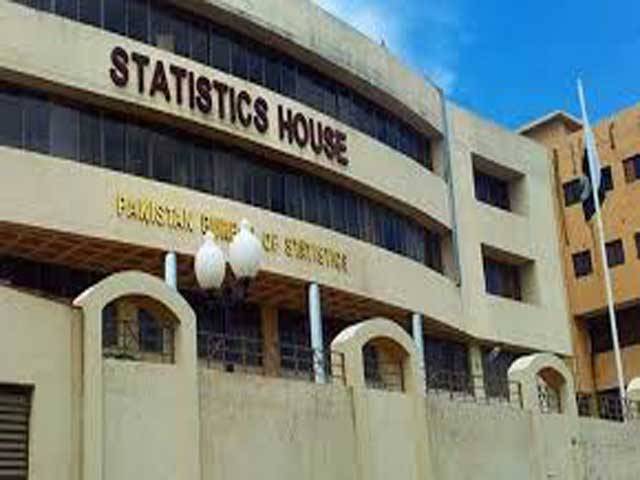ISLAMABAD - Inflation has skyrocketed to 12.67 percent in November 2019 over same period of previous year due to continuous increase in prices of food commodities in the country.
Inflation, measured through the Consumer Price Index (CPI), edged up by 1.34 percent in November over the previous month (October), the Pakistan Bureau of Statistics (PBS) reported on Wednesday. Inflation with new base year (2015-16) has increased by 12.67 percent in November 2019.
Meanwhile, on old methodology (base 2007-08), the inflation has gone to 12.28 percent in the previous month (November 2019) over the corresponding period of last year.
Inflation rate is continuously increasing mainly due to the impact of the economic policies of the incumbent government including rupee devaluation and increase in energy costs. However, the government had attributed the prevailing price hike to suspension of trade with India and seasonal factors. The government’s economic team had forecasted easing out the inflationary pressure in the next two months.
The State Bank of Pakistan in its latest monetary policy had noted that inflation outturns were somewhat higher than expectations but largely reflected upward adjustments in administered prices and rise in prices of food items primarily due to temporary supply disruptions. It further noted that recent outturns of month-on-month inflation had been higher than in previous months and if sustained could affect inflation expectations.
Nevertheless, in light of the temporary nature of these increases, continued softness in domestic demand, and recent appreciation of the currency on the back of improving market sentiment, the MPC was of the view that inflationary pressures were expected to recede in the second half of the fiscal year, as noted in the last Monetary Policy Statement. The SBP’s projection for average inflation for FY20 remained broadly unchanged at 11 – 12 percent and maintaining the current monetary policy stance was appropriate.
According to the PBS, inflation was recorded at 11.58 percent during first five months (July to November) of the current fiscal year. Meanwhile, the Sensitive Price Indicator (SPI), which gauges rates of kitchen items on weekly basis, increased by 16.45 percent. Similarly, the wholesale price index (WPI) based inflation enhanced by 13.37 percent in the period under review.
The break-up of inflation of 12.67 percent in November 2019 showed that food and non-alcoholic beverages prices increased by 19.4 percent. Similarly, health and education charges went up by 11.39 percent and 6.12 percent, respectively. Similarly, prices of utilities (housing, water, electricity, gas and fuel) increased by 8.81 percent in last the month.
Meanwhile, the prices of alcoholic beverages and tobacco went up by around 18.67 percent. Price of clothing and footwear increased by 9.37 percent and furnishing and household equipment maintenance charges 10.84 percent. Recreational charges and those related to culture went up by 6.8 percent in the period under review, while amounts charged by restaurants and hotels by 6.39 percent in November 2019 as compared to the same month last year.
The PBS has also changed the weights assigned to various consumption items in the goods basket, and introduced a new panel of prices to be obtained from urban and rural areas. As per data, the urban CPI covers 35 cities and 356 consumer items while rural tracks 27 rural centres and 244 items.
In urban areas, the food items which saw their price increased during October 2019 included: tomatoes (149.41 percent), pulse mash (11.7 percent), pulse moong (7.79 percent), wheat (6.86 percent), potatoes (6.72percent), wheat flour (4.74 percent), beans (4.53 percent), onions (3.82 percent), woollen readymade garments (3.62 percent), dry fruits (3.22 percent), woollen cloth (3.15 percent), pulse masoor (2.66 percent), mustard oil (2.49 percent), pulse gram (1.94 percent), milk fresh (1.42 percent), cooking oil (1.2 percent), fish (1.17 percent), construction wage rates (1.08 percent), gram whole (1.04 percent), and vegetable ghee (1 percent).
On the other hand, items that declined in urban were fresh vegetables (11.52 percent), chicken (2.28 percent), sugar (1.18 percent), fresh fruits (1.03 percent) and electricity charges (0.93 percent).
In the rural areas, items that witnessed inflation increase included tomatoes (189.67 percent), onions (13.83 percent), wheat (10.85 percent), pulse moong (8.55 percent), beans (6.24 percent), wheat flour (6.15 percent), fresh fruits (4.68 percent), potatoes (4.43 percent), pulse Masoor (3.89 percent), dry fruits (3.05 percent), cotton cloth (2.58 percent), gram whole (1.48 percent), eggs (1.31 percent), fish (1.3 percent), readymade food (1.19 percent), rice (1.02 percent) and pulse gram (1.01 percent).






